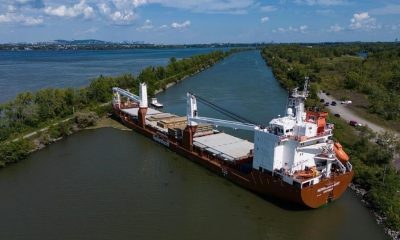Science
NASA moon mission delays are nothing to worry about, says astronaut Chris Hadfield
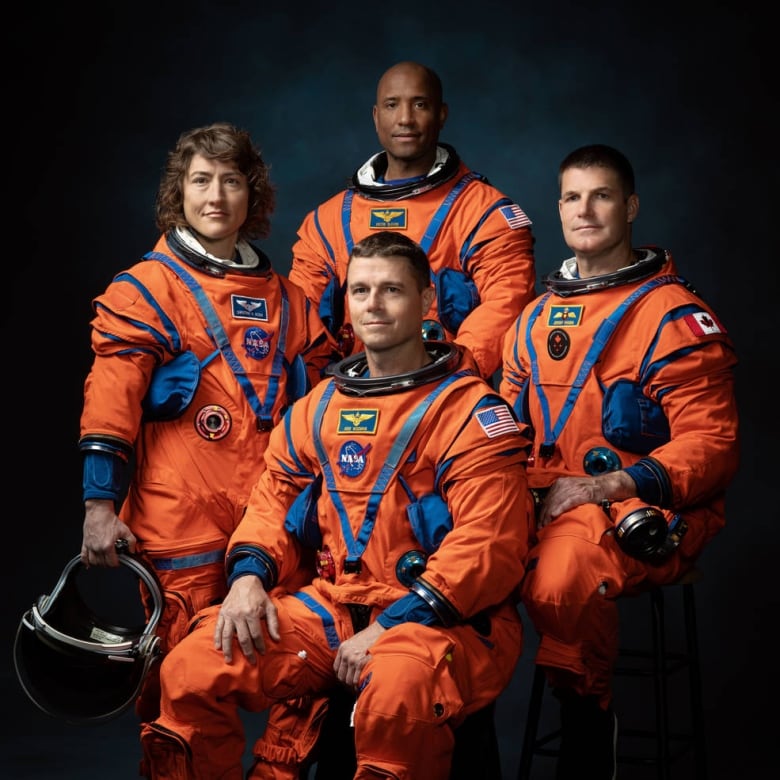
As It Happens6:31NASA moon mission delays are nothing to worry about, says astronaut Chris Hadfield
Retired Canadian astronaut Chris Hadfield says that, from where he’s sitting, the Artemis moon missions are coming along just fine.
NASA announced Tuesday it is delaying two upcoming missions — including the flight meant to carry the first Canadian astronaut around the moon — due to technical issues with its spacecraft that could pose a danger to the crew.
Artemis II, the first crewed mission to the moon in half a century, was scheduled to launch this November, but has been pushed to September 2025. Canadian Space Agency astronaut Jeremy Hansen is the flight’s mission specialist.
Artemis III, which aims to send humans to the lunar south pole, will be postponed from 2025 to 2026.
Hadfield, who has flown three space missions and also served as commander of the International Space Station, says these delays are a normal and expected part of space travel. Here is part of his conversation with As It Happens host Nil Köksal.
The safety and technical issues NASA is citing for these delays, what do they signal to you? Is this where a mission like this should be at this stage?
It’s been 50 years or more since human beings have gone to the moon, so we really want to do it right. You’ve got to be careful. And we flew a test mission a year ago with nobody on board, and learned a lot of things there.
It’s not an airline. It’s not like we’ve got a specific time and date that is absolutely necessary to launch. We will launch as soon as we think everything’s safe enough to have a good chance of success.
The short answer to your question, Nil, is I think things are going along well.
Even when we talk about the significance of some of the things they’ve highlighted? Electronics and the life support system that would keep the astronauts alive?
That’s what spaceships do, right? Every single thing that goes wrong on a spaceship is related to keeping astronauts alive.
I commanded a space station, and things fail all the time. They fail every day. It’s just a big machine. And you try … [to] fix them before you leave Earth if you can, because that improves your chances of success.
That’s the reason you do a test flight is to wring out problems and sort out potential failures, and then work on good solutions to launch with as healthy a ship as possible.
If everything was perfect, I’d be suspicious. You know, I think it’s great that we’re finding problems and working on them and making the vehicle as healthy as possible to get ready to trust it with four people.
If you are Jeremy Hansen and his crewmates, what do you think they’re feeling right now? Relieved or disappointed? Or maybe both, I’d guess?
Neither. It’s just a normal part of the process.
Another six months or a year or whatever it’s going to be, it doesn’t really matter. This is time and preparation and development and mission advancement and making sure we optimize our chances.
For the crew, it’s just, “Yeah, OK. Well, fine.” There was nothing magic about that previous date on the calendar. And there’s nothing magic about this one. And there’s very little chance they’ll launch on this date either. But you have to set a date that everyone’s now working towards.
I don’t think any of my space launches launched on time — or at least, you know, on the first date that we chose. But they all launched, and they were all successful. And it’s because of the process that they’re going through right now.
So if you were to put a date on it … would you even be able to do that at this stage?
No, nobody can. It’s as simple as that.
The countdown to launch, I know people think it starts at 10, but it starts years in advance…. And at any moment, you can have a launch hold, whether it’s 15 seconds before launch or 15 months before launch.
It’s just a different business, I think, than most people visualize or think about. And this is as hard as it gets, sending four human beings, not 400 kilometres away like I went, but 400,000 kilometres away. So the risks are higher. The opportunities to help them in real time are lower. They can’t just deorbit and come back to Earth.
For Jeremy and his crew, this is life as normal. And they are four great representatives of humanity. I’m super proud to know them.
[In] the previous U.S. administration, there was a sort of sense of urgency infused into getting astronauts back on the moon…. Are you concerned that that kind of urgency from U.S. leaders at that time helped move this along too quickly?
Politicians come and go, and the electoral cycles are going to continue to happen.
It’s always going to be complex and [involve] a lot of external factors. But you could drive yourself crazy worrying about the things that you have no control over.
I think it’s really good for NASA and the astronauts to be focused hard on the things that they can control and make sure that they’re going to be able to do their part properly.
[There are] those who are not as excited about space exploration as you and many others around the world, who point … to these headlines and say this should all be left to private enterprise rather than a taxpayer-funded agency. What do you say in response to that?
There’s always a role for government. It’s why we have governments. And there’s a role for private industry, and that’s why we have private industry.
The things that further humanity, that push back the edges of our understanding of things like the CERN particle accelerator or the SNOLAB that’s in Sudbury, or the research laboratories that are right across Canada, or the telescopes that we help build … that’s not the job of private industry, because they can’t make a profit at it.
Exploring the moon, putting human beings on the moon, exploring the rest of the universe, understanding the very nature of dark matter and dark energy — that still takes us collectively to agree that this is something that humanity needs to work on together. And some of our domestic product needs to go towards that, as well as taking care of each other.
So a mission like this one, Artemis, is somewhat in the middle. It’s private companies building the hardware. But it’s still governments fundamentally footing the bill.
And it’s always been that way. That’s what exploration is. It’s always been like that. This is just the current manifestation of it.

Science
Asteroid Apophis will visit Earth in 2029, and this European satellite will be along for the ride

The European Space Agency is fast-tracking a new mission called Ramses, which will fly to near-Earth asteroid 99942 Apophis and join the space rock in 2029 when it comes very close to our planet — closer even than the region where geosynchronous satellites sit.
Ramses is short for Rapid Apophis Mission for Space Safety and, as its name suggests, is the next phase in humanity’s efforts to learn more about near-Earth asteroids (NEOs) and how we might deflect them should one ever be discovered on a collision course with planet Earth.
In order to launch in time to rendezvous with Apophis in February 2029, scientists at the European Space Agency have been given permission to start planning Ramses even before the multinational space agency officially adopts the mission. The sanctioning and appropriation of funding for the Ramses mission will hopefully take place at ESA’s Ministerial Council meeting (involving representatives from each of ESA’s member states) in November of 2025. To arrive at Apophis in February 2029, launch would have to take place in April 2028, the agency says.
This is a big deal because large asteroids don’t come this close to Earth very often. It is thus scientifically precious that, on April 13, 2029, Apophis will pass within 19,794 miles (31,860 kilometers) of Earth. For comparison, geosynchronous orbit is 22,236 miles (35,786 km) above Earth’s surface. Such close fly-bys by asteroids hundreds of meters across (Apophis is about 1,230 feet, or 375 meters, across) only occur on average once every 5,000 to 10,000 years. Miss this one, and we’ve got a long time to wait for the next.
When Apophis was discovered in 2004, it was for a short time the most dangerous asteroid known, being classified as having the potential to impact with Earth possibly in 2029, 2036, or 2068. Should an asteroid of its size strike Earth, it could gouge out a crater several kilometers across and devastate a country with shock waves, flash heating and earth tremors. If it crashed down in the ocean, it could send a towering tsunami to devastate coastlines in multiple countries.
Over time, as our knowledge of Apophis’ orbit became more refined, however, the risk of impact greatly went down. Radar observations of the asteroid in March of 2021 reduced the uncertainty in Apophis’ orbit from hundreds of kilometers to just a few kilometers, finally removing any lingering worries about an impact — at least for the next 100 years. (Beyond 100 years, asteroid orbits can become too unpredictable to plot with any accuracy, but there’s currently no suggestion that an impact will occur after 100 years.) So, Earth is expected to be perfectly safe in 2029 when Apophis comes through. Still, scientists want to see how Apophis responds by coming so close to Earth and entering our planet’s gravitational field.
“There is still so much we have yet to learn about asteroids but, until now, we have had to travel deep into the solar system to study them and perform experiments ourselves to interact with their surface,” said Patrick Michel, who is the Director of Research at CNRS at Observatoire de la Côte d’Azur in Nice, France, in a statement. “Nature is bringing one to us and conducting the experiment itself. All we need to do is watch as Apophis is stretched and squeezed by strong tidal forces that may trigger landslides and other disturbances and reveal new material from beneath the surface.”
By arriving at Apophis before the asteroid’s close encounter with Earth, and sticking with it throughout the flyby and beyond, Ramses will be in prime position to conduct before-and-after surveys to see how Apophis reacts to Earth. By looking for disturbances Earth’s gravitational tidal forces trigger on the asteroid’s surface, Ramses will be able to learn about Apophis’ internal structure, density, porosity and composition, all of which are characteristics that we would need to first understand before considering how best to deflect a similar asteroid were one ever found to be on a collision course with our world.
Besides assisting in protecting Earth, learning about Apophis will give scientists further insights into how similar asteroids formed in the early solar system, and, in the process, how planets (including Earth) formed out of the same material.
One way we already know Earth will affect Apophis is by changing its orbit. Currently, Apophis is categorized as an Aten-type asteroid, which is what we call the class of near-Earth objects that have a shorter orbit around the sun than Earth does. Apophis currently gets as far as 0.92 astronomical units (137.6 million km, or 85.5 million miles) from the sun. However, our planet will give Apophis a gravitational nudge that will enlarge its orbit to 1.1 astronomical units (164.6 million km, or 102 million miles), such that its orbital period becomes longer than Earth’s.
It will then be classed as an Apollo-type asteroid.
Ramses won’t be alone in tracking Apophis. NASA has repurposed their OSIRIS-REx mission, which returned a sample from another near-Earth asteroid, 101955 Bennu, in 2023. However, the spacecraft, renamed OSIRIS-APEX (Apophis Explorer), won’t arrive at the asteroid until April 23, 2029, ten days after the close encounter with Earth. OSIRIS-APEX will initially perform a flyby of Apophis at a distance of about 2,500 miles (4,000 km) from the object, then return in June that year to settle into orbit around Apophis for an 18-month mission.
Related Stories:
Furthermore, the European Space Agency still plans on launching its Hera spacecraft in October 2024 to follow-up on the DART mission to the double asteroid Didymos and Dimorphos. DART impacted the latter in a test of kinetic impactor capabilities for potentially changing a hazardous asteroid’s orbit around our planet. Hera will survey the binary asteroid system and observe the crater made by DART’s sacrifice to gain a better understanding of Dimorphos’ structure and composition post-impact, so that we can place the results in context.
The more near-Earth asteroids like Dimorphos and Apophis that we study, the greater that context becomes. Perhaps, one day, the understanding that we have gained from these missions will indeed save our planet.

Science
McMaster Astronomy grad student takes a star turn in Killarney Provincial Park
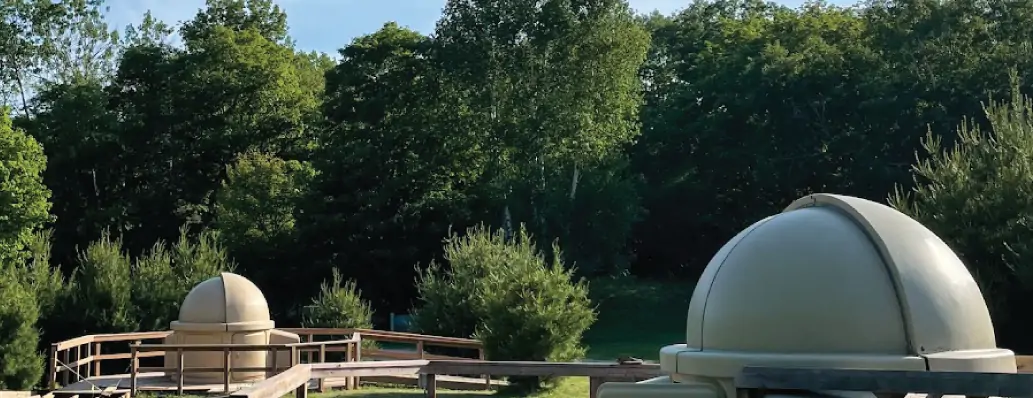
Astronomy PhD candidate Veronika Dornan served as the astronomer in residence at Killarney Provincial Park. She’ll be back again in October when the nights are longer (and bug free). Dornan has delivered dozens of talks and shows at the W.J. McCallion Planetarium and in the community. (Photos by Veronika Dornan)
BY Jay Robb, Faculty of Science
July 16, 2024
Veronika Dornan followed up the April 8 total solar eclipse with another awe-inspiring celestial moment.
This time, the astronomy PhD candidate wasn’t cheering alongside thousands of people at McMaster — she was alone with a telescope in the heart of Killarney Provincial Park just before midnight.
Dornan had the park’s telescope pointed at one of the hundreds of globular star clusters that make up the Milky Way. She was seeing light from thousands of stars that had travelled more than 10,000 years to reach the Earth.
This time there was no cheering: All she could say was a quiet “wow”.
Dornan drove five hours north to spend a week at Killarney Park as the astronomer in residence. part of an outreach program run by the park in collaboration with the Allan I. Carswell Observatory at York University.
Dornan applied because the program combines her two favourite things — astronomy and the great outdoors. While she’s a lifelong camper, hiker and canoeist, it was her first trip to Killarney.
Bruce Waters, who’s taught astronomy to the public since 1981 and co-founded Stars over Killarney, warned Dornan that once she went to the park, she wouldn’t want to go anywhere else.
The park lived up to the hype. Everywhere she looked was like a painting, something “a certain Group of Seven had already thought many times over.”
She spent her days hiking the Granite Ridge, Crack and Chikanishing trails and kayaking on George Lake. At night, she went stargazing with campers — or at least tried to. The weather didn’t cooperate most evenings — instead of looking through the park’s two domed telescopes, Dornan improvised and gave talks in the amphitheatre beneath cloudy skies.
Dornan has delivered dozens of talks over the years in McMaster’s W.J. McCallion Planetarium and out in the community, but “it’s a bit more complicated when you’re talking about the stars while at the same time fighting for your life against swarms of bugs.”
When the campers called it a night and the clouds parted, Dornan spent hours observing the stars. “I seriously messed up my sleep schedule.”
She also gave astrophotography a try during her residency, capturing images of the Ring Nebula and the Great Hercules Cluster.
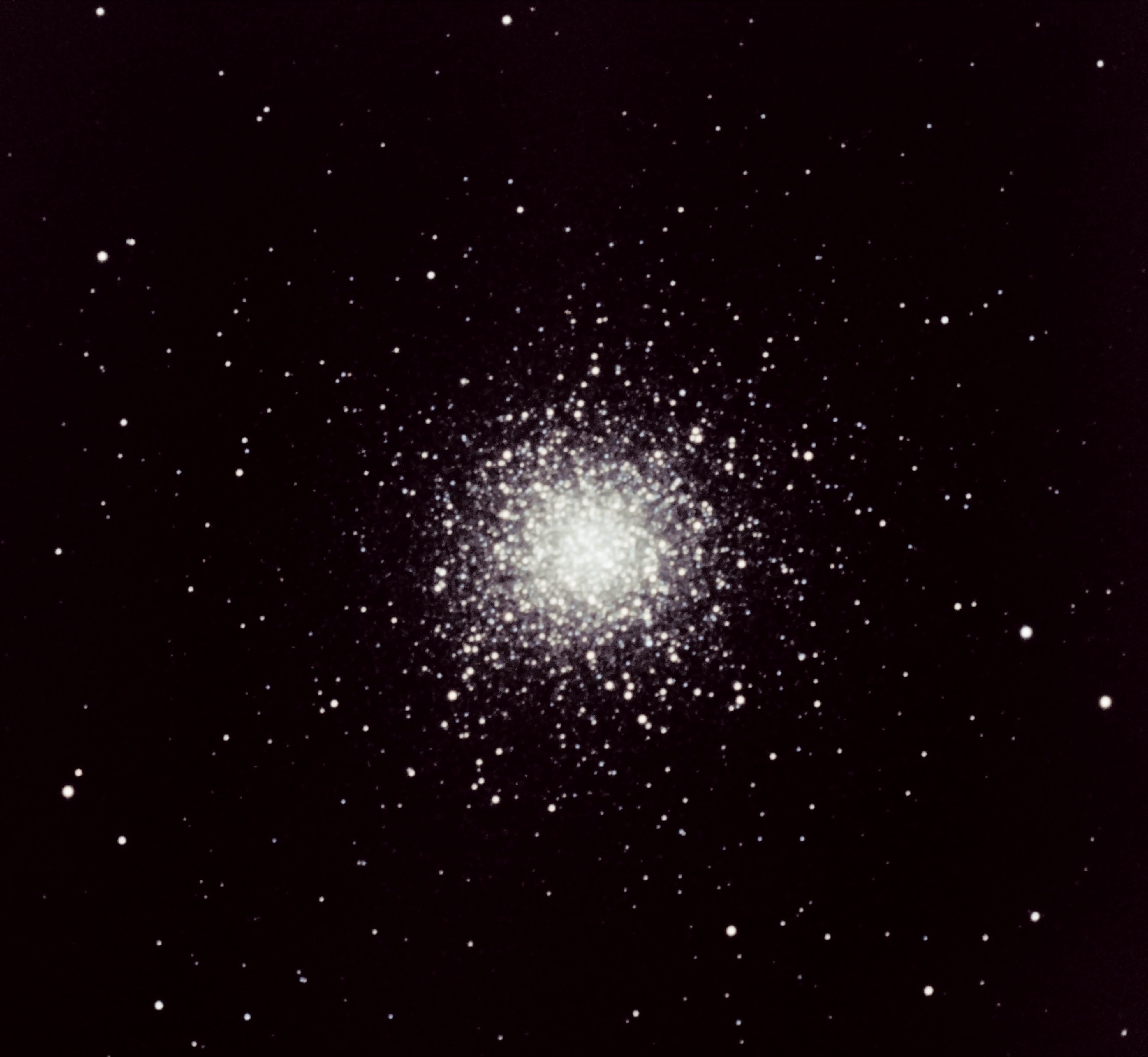
“People assume astronomers take their own photos. I needed quite a lot of guidance for how to take the images. It took a while to fiddle with the image properties, but I got my images.”
Dornan’s been invited back for another week-long residency in bug-free October, when longer nights offer more opportunities to explore and photograph the final frontier.
She’s aiming to defend her PhD thesis early next summer, then build a career that continues to combine research and outreach.
“Research leads to new discoveries which gives you exciting things to talk about. And if you’re not connecting with the public then what’s the point of doing research?”

Science
Where in Vancouver to see the ‘best meteor shower of the year’
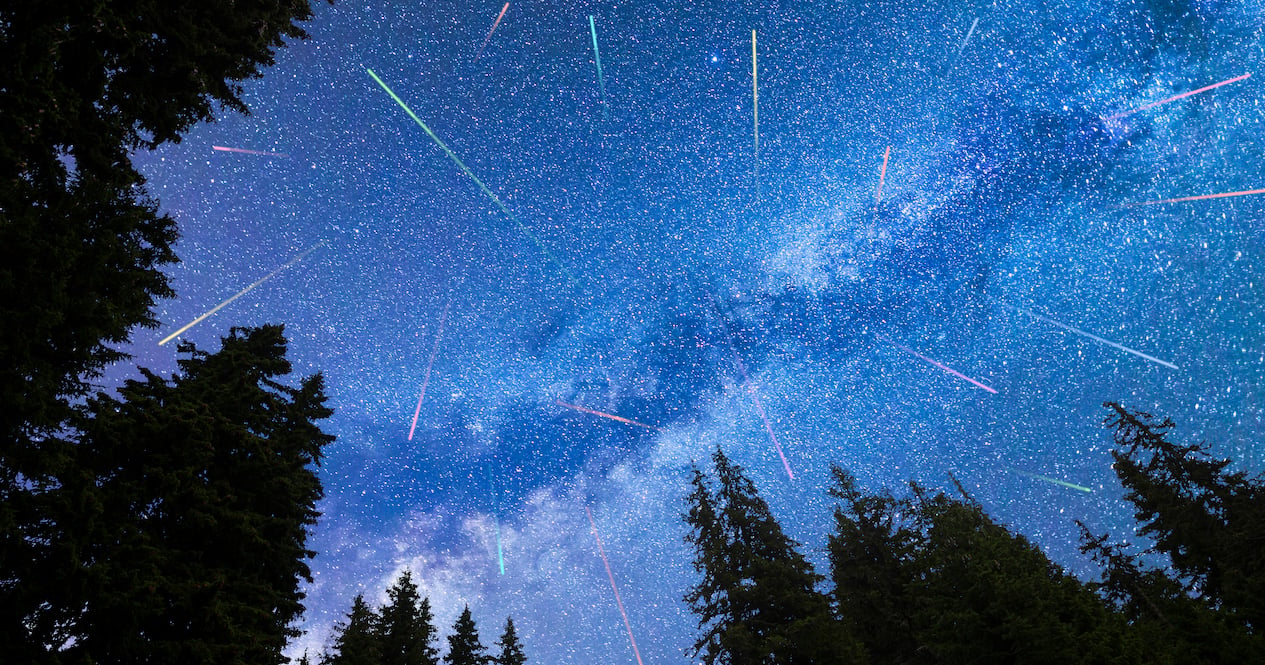
Eyes to the skies, Vancouver, because between now and September 1st, stargazers can witness the ‘best meteor shower of the year’ according to NASA.
Known for its “long wakes of light and colour,” the Perseid Meteor Shower will peak on August 12th, 2024 – so consider this list a great place to start if you’re in search of a prime stargazing spots!
Grab your lawn chairs and blankets, and seek as little light pollution as possible. Here are some ideal stargazing spots to check out in and around Vancouver this summer.
Recent Posts:
This island with clear waters has one of the prettiest towns in BC
10 beautiful lake towns to visit in BC this summer
Wreck Beach
If you’re willing to brave the stairs and the regulars, it doesn’t get much better than Wreck Beach for watching the skies – for both sunsets and stargazing. The west-facing views practically eliminate immediate distractions from the city lights.
Spanish Banks Park
Spanish Banks is the perfect mixture of convenience and quality. Its location offers unobstructed views of the skies above, and it’s far enough away from downtown to mitigate some of the light pollution.
Burnaby Mountain Park
If it’s good enough for a university observatory, it’s good enough for us. Pretty much anywhere on Burnaby Mountain will offer tremendous viewpoints, but the higher you get the better (safely).
Porteau Cove
A short drive from Vancouver gets you incredible views of the Howe Sound from directly on the water. And naturally, its distance from any nearby community makes it a prime spot for stargazing.
Cypress Mountain
In addition to having one of the best viewpoints in Vancouver period, Cypress Mountain (and the road up to it) is also a great place to watch the sky. For a double-whammy, we say that you come around sunset, then hang out while the sky gets dark. Sure, it might take a few hours, but the view is worth it.
So there you have it, stargazers! Get ready to witness a dazzling show this summer.

-

 News7 hours ago
News7 hours agoIndustry, workers await labour board decision in railway dispute
-

 News12 hours ago
News12 hours agoIndustry awaits labour board decision in railway dispute
-

 News1 hour ago
News1 hour agoMontreal police investigating suspicious death of an 88-year-old man
-

 News4 hours ago
News4 hours agoTugboats free grounded cargo ship blocking traffic in St. Lawrence Seaway
-

 News8 hours ago
News8 hours agoUnder sea and over land, the Paris Paralympics flame is lit before beginning an exceptional journey
-

 News12 hours ago
News12 hours agoProfessor asks top court to review ‘revolutionary’ law curbing spy watchdog members
-

 News17 hours ago
News17 hours agoBombers scratch past Ticats 26-23 with late TD drive
-

 News23 hours ago
News23 hours agoAdam Scott builds 3-shot lead in hopes of reaching FedEx Cup finale









